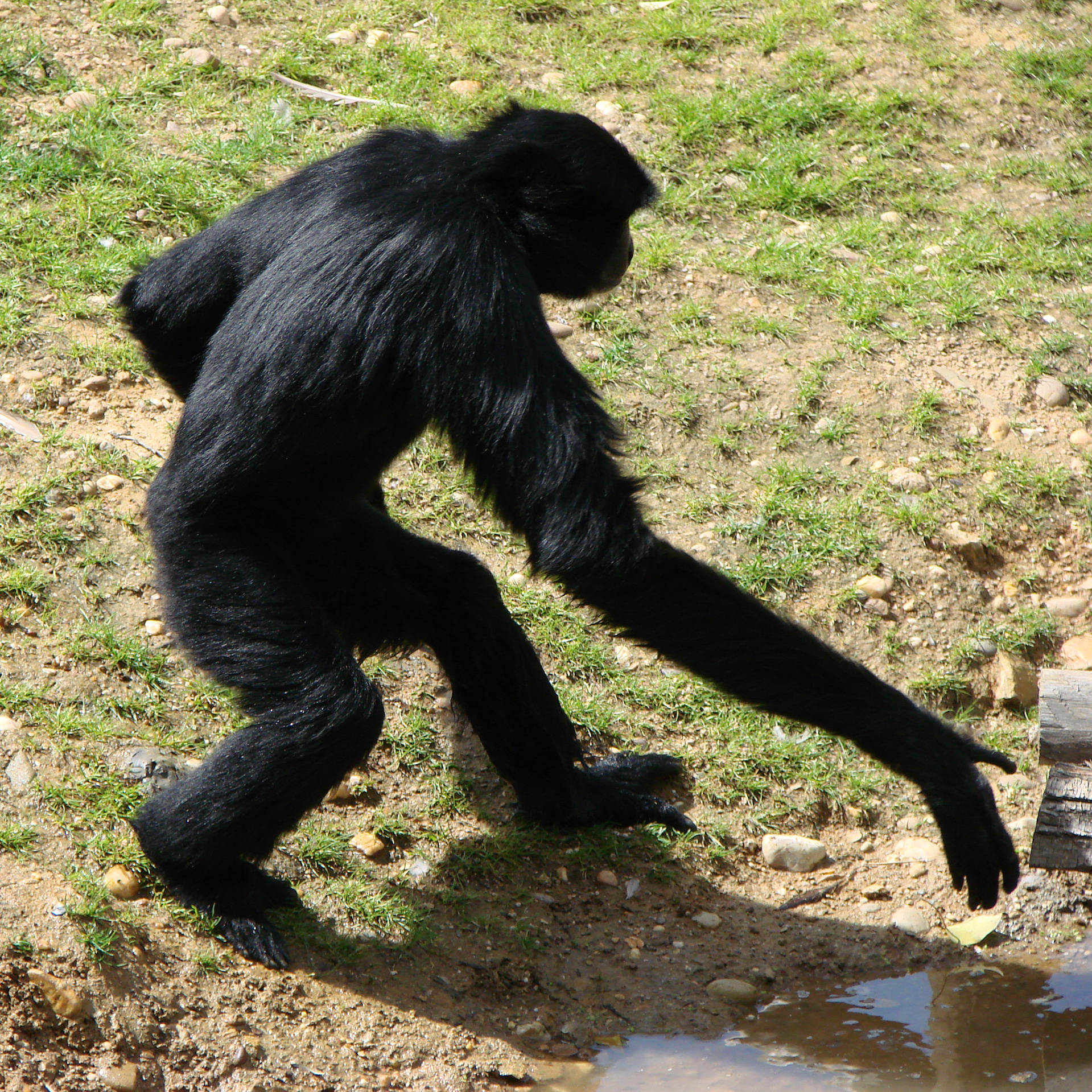|
Taung Child
The Taung Child (or Taung Baby) is the fossilised skull of a young ''Australopithecus africanus''. It was discovered in 1924 by quarrymen working for the Northern Lime Company in Taung, South Africa. Raymond Dart described it as a new species in the journal ''Nature'' in 1925. The Taung skull is in repository at the University of Witwatersrand. Dean Falk, a specialist in brain evolution, has called it "the most important anthropological fossil of the twentieth century." Description The Taung Child was originally thought to have been about six years old at death because of the presence of deciduous teeth, but is now believed to have been about three or four, based on studies of rates of enamel deposition on the teeth. There was some debate over the age of the child, initially because it was unclear if they grew at the speed of a human, or of an ape. Compared to an ape, they would have been aged about 4 years, and compared to a human, they would have been aged around 5–7 y ... [...More Info...] [...Related Items...] OR: [Wikipedia] [Google] [Baidu] |
Australopithecus Africanus
''Australopithecus africanus'' is an extinct species of australopithecine which lived between about 3.3 and 2.1 million years ago in the Late Pliocene to Early Pleistocene of South Africa. The species has been recovered from Taung, Sterkfontein, Makapansgat, and Gladysvale. The first specimen, the Taung child, was described by anatomist Raymond Dart in 1924, and was the first early hominin found. However, its closer relations to humans than to other apes would not become widely accepted until the middle of the century because most had believed humans evolved outside of Africa. It is unclear how ''A. africanus'' relates to other hominins, being variously placed as ancestral to ''Homo'' and ''Paranthropus'', to just ''Paranthropus'', or to just '' P. robustus''. The specimen " Little Foot" is the most completely preserved early hominin, with 90% of the skeleton intact, and the oldest South African australopith. However, it is controversially suggested that it and similar speci ... [...More Info...] [...Related Items...] OR: [Wikipedia] [Google] [Baidu] |
Tufa
Tufa is a variety of limestone formed when carbonate minerals precipitation (chemistry), precipitate out of water in ambient temperature, unheated rivers or lakes. hot spring, Geothermally heated hot springs sometimes produce similar (but less porous) carbonate deposits, which are known as ''travertine'' or ''thermogene travertine''. Tufa is sometimes referred to as ''meteogene travertine''. Classification and features Modern and fossil tufa deposits abound with wetland plants; as such, many tufa deposits are characterised by their large wikt:macrobiology, macrobiological component, and are highly porous. Tufa forms either in fluvial channels or in lacustrine environments. Ford and Pedley (1996) provide a review of tufa systems worldwide. Fluvial deposits Deposits can be classified by their depositional environment (or otherwise by vegetation or petrography, petrographically). Pedley (1990) provides an extensive classification system, which includes the following classes of fl ... [...More Info...] [...Related Items...] OR: [Wikipedia] [Google] [Baidu] |
Java Man
Java Man (''Homo erectus erectus'', formerly also ''Anthropopithecus erectus or'' ''Pithecanthropus erectus'') is an early human fossil discovered in 1891 and 1892 on the island of Java (Indonesia). Estimated to be between 700,000 and 1,490,000 years old, it was, at the time of its discovery, the oldest hominid fossil ever found, and it remains the type specimen for ''Homo erectus''. Led by Eugène Dubois, the excavation team uncovered a tooth, a skullcap, and a thighbone at Trinil on the banks of the Solo River in East Java. Arguing that the fossils represented the " missing link" between apes and humans, Dubois gave the species the scientific name '' Anthropopithecus erectus'', then later renamed it ''Pithecanthropus erectus''. The fossil aroused much controversy. Within a decade of the discovery almost eighty books or articles had been published on Dubois's finds. Despite Dubois's argument, few accepted that Java Man was a transitional form between apes and humans. Some ... [...More Info...] [...Related Items...] OR: [Wikipedia] [Google] [Baidu] |
Sherwood Washburn
Sherwood Larned Washburn ( – ), nicknamed "Sherry", was an American physical anthropologist, and "a legend in the field." He was a pioneer in the field of primatology, opening it to the study of primates in their natural habitats. His research and influence in the comparative analysis of primate behaviors to theories of human origins established a new course of study within the field of human evolution. He changed the field of anthropology with the publication of his paper ''The New Physical Anthropology'', in 1951, in which he argued, convincingly, that human variation was continuous, and could not be broken up into discontinuous races. Biography He was born and raised in Cambridge, Massachusetts to Henry Bradford Washburn Sr., dean of the Episcopal Theological School in Cambridge, and Edith Buckingham Hall. He was the younger brother of Henry Bradford Washburn. In his youth, Washburn took a keen interest in the field of natural history, and during school vacations worked ... [...More Info...] [...Related Items...] OR: [Wikipedia] [Google] [Baidu] |
Aleš Hrdlička
Alois Ferdinand Hrdlička, after 1918 changed to Aleš Hrdlička (; March 30,HRDLICKA, ALES in ''Marquis Who's Who'' (1902 edition) (via archive.org) 1869 – September 5, 1943), was a Czechs, Czech Anthropology, anthropologist who lived in the United States after his family had moved there in 1881. He was born in Humpolec, Bohemia (today in the Czech Republic). Hrdlička was a pioneer in the field of anthropology and the first curator of physical anthropology of the Smithsonian Museum from 1904 until 1941. He correctly theorized that migration from Asia to the Americas via the Bering Strait was the origin of the Indigenous people of the Americas, American Indians, but incorrectly dated that migration as having occurred not more than 3,000 years ago. He initially denied evidence by archaeological findings such as that ... [...More Info...] [...Related Items...] OR: [Wikipedia] [Google] [Baidu] |
Arthur Smith Woodward
Sir Arthur Smith Woodward, FRS (23 May 1864 – 2 September 1944) was an English palaeontologist, known as a world expert in fossil fish. He also described the Piltdown Man fossils, which were later determined to be fraudulent. He is not related to Henry Woodward, whom he replaced as curator of the Geology Department of the British Museum of Natural History. Biography Woodward was born in Macclesfield, Cheshire, England and was educated there and at Owens College, Manchester. He joined the staff of the Department of Geology at the Natural History Museum in 1882. He became assistant Keeper of Geology in 1892, and Keeper in 1901. He was appointed Secretary of the Palaeontographical Society and in 1904, was appointed President of the Geological Society. He was elected in June 1901 a Fellow of the Royal Society He was the world expert on fossil fish, writing his ''Catalogue of the Fossil Fishes in the British Museum'' (1889–1901). His travels included journeys to South ... [...More Info...] [...Related Items...] OR: [Wikipedia] [Google] [Baidu] |
Grafton Elliot Smith
Sir Grafton Elliot Smith (15 August 1871 – 1 January 1937) was an Australian-British anatomist, Egyptologist and a proponent of the hyperdiffusionist view of prehistory. He believed in the idea that cultural innovations occur only once and that they spread geographically. Based on this, he traced the origins of many cultural and traditional practices across the world, including the New World, to ideas that he believed came from Egypt and in some instances from Asia. An expert on brain anatomy, he was one of the first to study Egyptian mummies using radiological techniques. He took an interest in extinct humanoids and was embroiled in controversy over the authenticity of the Piltdown Man. Professional career Smith was born in Grafton, New South Wales to Stephen Sheldrick Smith who had moved to Australia from London in 1860 and Mary Jane, née Evans. He received his early education from Grafton Public School where his father was headmaster. When the family moved to Sydney i ... [...More Info...] [...Related Items...] OR: [Wikipedia] [Google] [Baidu] |
Arthur Keith
Sir Arthur Keith FRS FRAI (5 February 1866 – 7 January 1955) was a British anatomist and anthropologist, and a proponent of scientific racism. He was a fellow and later the Hunterian Professor and conservator of the Hunterian Museum of the Royal College of Surgeons of England. He was a strong proponent of the Piltdown Man, but conceded it to be a forgery shortly before his death. Career A leading figure in the study of human fossils, Keith became President of the Royal Anthropological Institute. The latter role stimulated his interest in the subject of human evolution, leading to the publication of his book ''A New Theory of Human Evolution,'' in which he supported the idea of group selection. Where others had postulated that physical separation could provide a barrier to interbreeding, allowing groups to evolve along different lines, Keith introduced the idea of cultural differences as providing a mental barrier, emphasising territorial behaviour, and the concept of the ... [...More Info...] [...Related Items...] OR: [Wikipedia] [Google] [Baidu] |
Paleoanthropology
Paleoanthropology or paleo-anthropology is a branch of paleontology and anthropology which seeks to understand the early development of anatomically modern humans, a process known as hominization, through the reconstruction of evolutionary kinship lines within the family Hominidae, working from biological evidence (such as petrified skeletal remains, bone fragments, footprints) and cultural evidence (such as stone tools, artifacts, and settlement localities). The field draws from and combines primatology, paleontology, biological anthropology, and cultural anthropology. As technologies and methods advance, genetics plays an ever-increasing role, in particular to examine and compare DNA structure as a vital tool of research of the evolutionary kinship lines of related species and genera. Etymology The term paleoanthropology derives from Greek palaiós (παλαιός) "old, ancient", ánthrōpos (ἄνθρωπος) "man, human" and the suffix -logía (-λογία) "study of". ... [...More Info...] [...Related Items...] OR: [Wikipedia] [Google] [Baidu] |
Genus (biology)
Genus (; : genera ) is a taxonomic rank above species and below family as used in the biological classification of living and fossil organisms as well as viruses. In binomial nomenclature, the genus name forms the first part of the binomial species name for each species within the genus. :E.g. '' Panthera leo'' (lion) and '' Panthera onca'' (jaguar) are two species within the genus '' Panthera''. ''Panthera'' is a genus within the family Felidae. The composition of a genus is determined by taxonomists. The standards for genus classification are not strictly codified, so different authorities often produce different classifications for genera. There are some general practices used, however, including the idea that a newly defined genus should fulfill these three criteria to be descriptively useful: # monophyly – all descendants of an ancestral taxon are grouped together (i.e. phylogenetic analysis should clearly demonstrate both monophyly and validity as a separate lineage). ... [...More Info...] [...Related Items...] OR: [Wikipedia] [Google] [Baidu] |
Tobias And Taung
Tobias is the transliteration of the , which is a Graecisation of the Hebrew biblical name . With the biblical Book of Tobit being present in the Deuterocanonical books and Biblical apocrypha, Tobias is a popular male given name for both Christians and Jews in English-speaking countries, German-speaking countries, the Low Countries, and Scandinavian countries. In English-speaking countries, it is often shortened to Toby and derivative names include Tobey. In German, this name appears as Tobias or Tobi; in French as Tobie; and in Swedish as Tobias or Tobbe. In other languages * Danish, Norwegian, German, Dutch, Swedish, Portuguese: Tobias * Amharic: ጦቢያ ''Ṭobiya'' * Burmese: တိုဘိယ (''Tobiya'') * Catalan: Tobies * Chinese (Simplified): 托拜厄斯 (Tuōbàièsī) * Chinese (Traditional):託比亞斯 (Tuōbǐyǎsī) * Croatian: Tobijaš * Czech: Tobiáš, Tobias * Finnish: Topias, Topi * French: Tobie * Greek: Τωβίας ''(Tobías)'' or '' (To ... [...More Info...] [...Related Items...] OR: [Wikipedia] [Google] [Baidu] |








